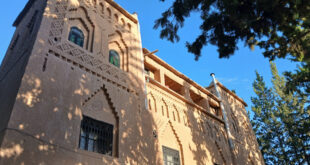The city of Alcobaça makes a great base for exploring some of the glorious UNESCO Portuguese world heritage sites in the heart of Portugal. On our recent visit, we stayed at the Real Abadia Hotel Spa complex just 3km out of town. It made for the perfect base, set in undulating countryside with indoor and outdoor pools and a mix of contemporary and traditional architectural styles.
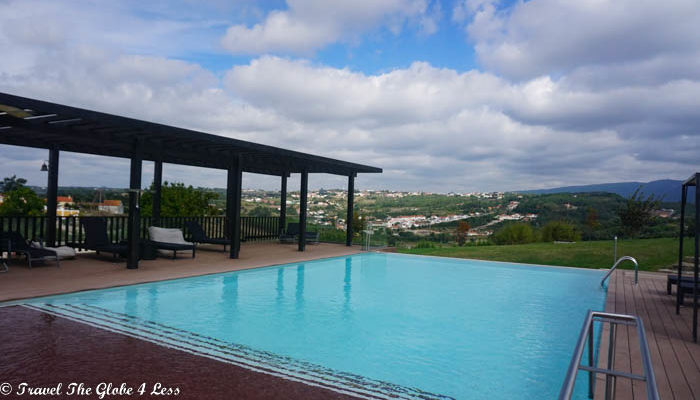
You can also take a guided day trip to Alcobaça from Lisbon if you have no car but otherwise, follow our one-day itinerary. You will get a fascinating glimpse into the past and discover intriguing stories of war, love, devotion, and revenge. Here’s what you need to know to start.
Portuguese world heritage sites key information
Cost
You can buy individual tickets at each of the Portuguese world heritage sites but the best option is to buy the combo ticket for all three sites. This costs €15 per adult or €7.50 for students and the elderly. This saves you €3 as each individual ticket costs €6. Although you can visit the church of Alcobaça for free, please do not scrimp on this ticket. I found the price exceptional value and the interiors of these monuments are spectacular.
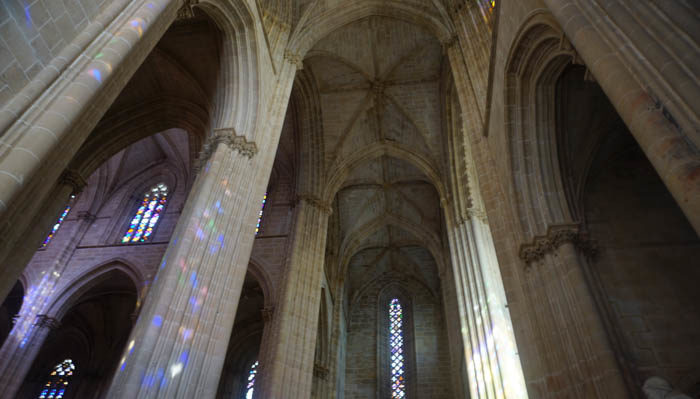
Get your guide
For a full explanation of each of the Portuguese world heritage sites, I recommend the Lonely Planet guide to Portugal. It offers detailed historical descriptions of each monument for history lovers. I prefer to entice you with my impressions of the humane and the beauty of the building. All three of these sites lack for nothing in both those departments.
Car Hire
We booked our car rental through Holiday Extras and paid just £34 for three days. We also paid an additional £33 for comprehensive insurance. Beware, this is a separate policy and the rental shop will still try to charge you for this extra when you arrive. Be sure to decline this and opt for the toll package instead.
Many tolls do not accept cash and the toll package simply bills you when you return the car. This is much quicker and easier than trying to find cash or pay by card at each checkpoint.
Our route
Here is the route we followed. You can click on the map for further details and timings but this route allows you to see all three monuments comfortably in a day.
UNESCO Portuguese world heritage sites
From Alcobaça, it is just a fifty-minute drive (probably less if you don’t get lost as we did) to Tomar, the furthest outpost for this trio of historical delights. On the road from Leiria, you will catch your first scintillating glimpse of the convent dominating the skyline above the town. Prepare to be wowed!
Convent of Christ
The Convento de Cristo was founded in 1160 as the headquarters of the mysterious Knights Templar. It sprawls above the riverside town of Tomar on a pine-clad hillside. As you drive up the winding road from the town centre, you will catch glimpses of whitewashed walls, castle towers and crumbling ruins.
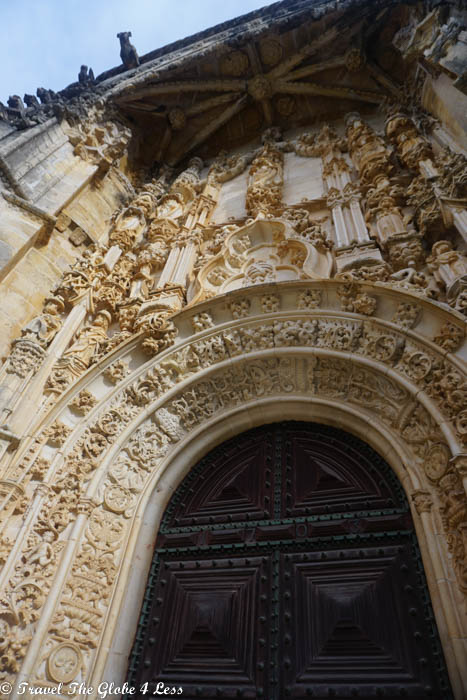
Inside, the ticket office leads into a tiled courtyard with colourful marigold flowerbeds and honey coloured arches. Vivid blue porcelain tiles decorate the walls and the gargoyles and carvings are at odds with the sense of calm that descends as you enter.
Convent Chapel
The chapel is unusual in this complex as it has a circular design, allegedly to allow knights to attend mass on horseback. It is elaborately decorated in stark contrast to the remainder of the building.
Convent dormitories
A long corridor houses the dormitory of individual rooms, some much more spacious than you might imagine. Dim lighting adds to the romanticism of the building and I imagine young knights poring over documents in their stone window seats, trying fervently to catch the last rays of sunshine. This building touches me on an emotional level I find hard to fathom. It is ethereal.
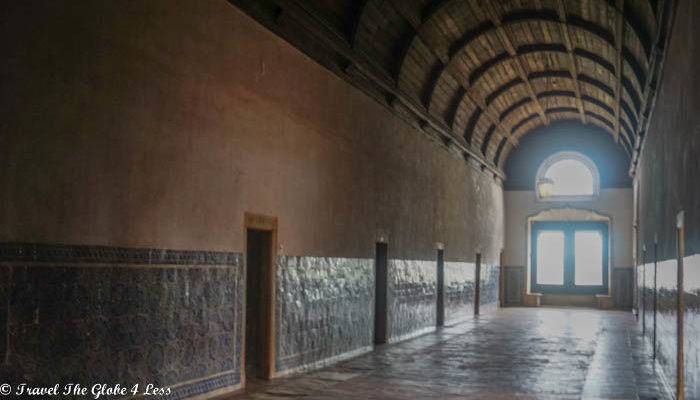
Convent courtyards
The stonework is entrancing with endless carvings of decorative shapes, flowers, gargoyles, cherubs and other characters. Particularly fascinating is the twisted staircase, like something out of a fairytale book.
One courtyard looks more like the inside of a decaying stately home. Twigs and bushes sprout from the crumbling rooftop whilst a dilapidated fountain languishes forlornly in the centre of the yard.
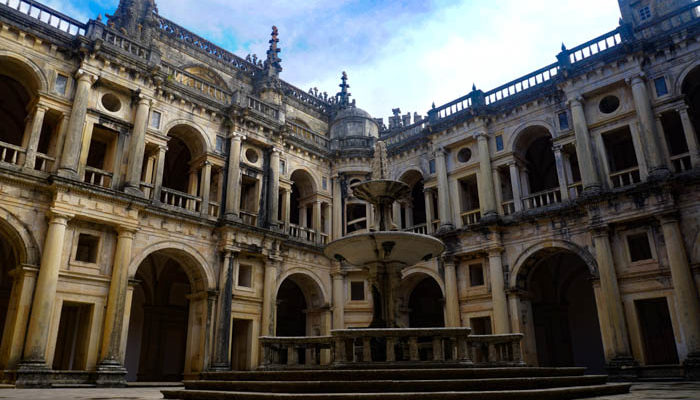
It’s really not hard to imagine a Jane Austen character at home here. The building evokes romance and passion rather than devotion and austerity. It is a strange mixture of church, castle and convent which is bewitching.
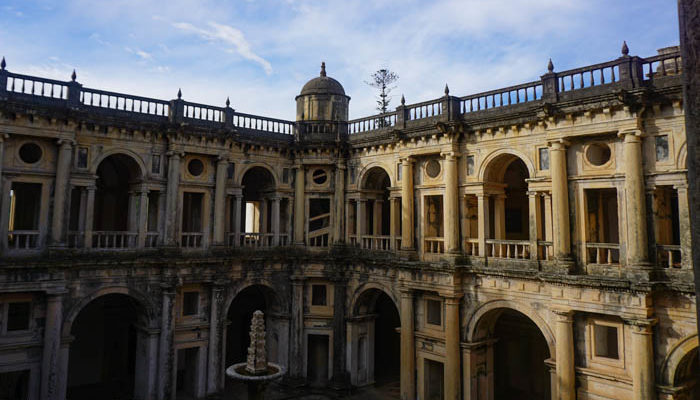
Pegões Aqueduct
If you can tear yourself away from the convent, take a quick detour to the aqueduct on the outskirts of town. Reminiscent of the Pont Du Gard in the south of France, this towering edifice was built to carry water 6km to the convent.
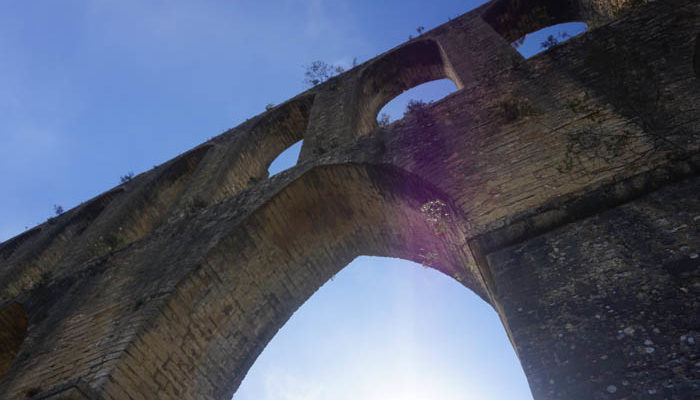
Your first glimpse of the aqueduct is uninspiring, but round the corner and you will see the aqueduct in all its impressive glory. Visitors can clamber onto the top of the structure to admire many of its 180 arches. Beware however this is not for those who suffer from vertigo as it is 30 metres high in parts.
From the top of the walls, however, you can admire the double story arches and the woodland beyond. You can see the spectacular sweeping curve and the extraordinarily well-preserved arches as they snake through the woodlands.
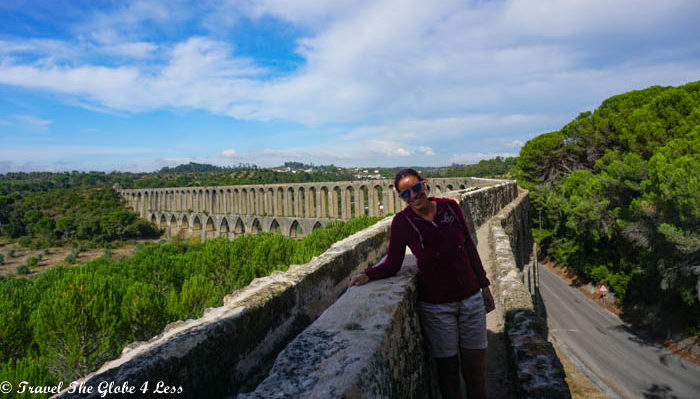
After you have had your fill of those views, head towards Batalha, around 35 minutes away.
Monastery of Batalha
The UNESCO Monastery of Batalha is less ornate and more serene than the convent in Tomar but equally beautiful. It was built to commemorate the victory of the Portuguese over the Castilians at the battle of Aljubarrota in 1385 and certainly is a fabulous tribute. It’s spires and towers rise majestically from the main square in various shades of honey and charcoal.

Chapel
The octagonal chapel is particularly unusual as it remains open to the skies. Inside its stained glass windows cast kaleidoscopic colours on to slippery tiles but otherwise it is relatively plain.
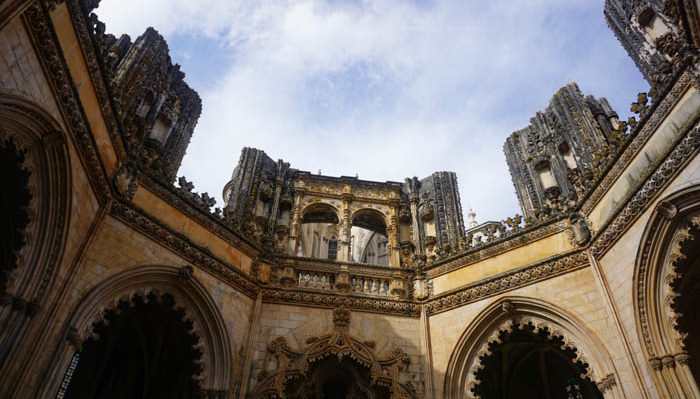
Church
Head around the building to the main entrance to enter an impressive church with towering columns lining a stunning aisle. The little chapel at the back houses the tombs of Dom João I and his wife, Queen Philippa of Lancaster and their four sons.
Courtyards
More impressive courtyards can be found to the exterior of the church and it’s possible to enjoy a moment of peace if you linger in these hallowed hallways for long.
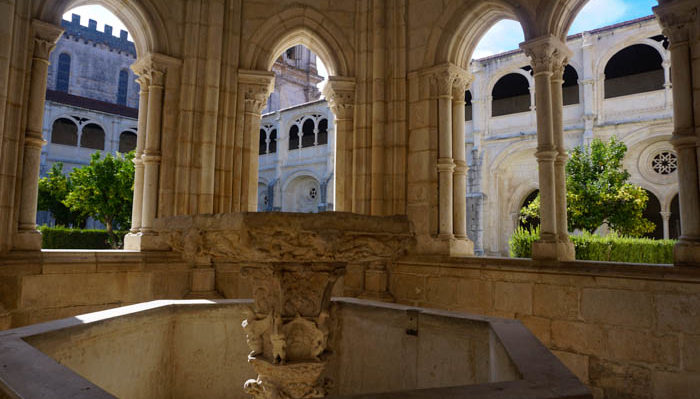
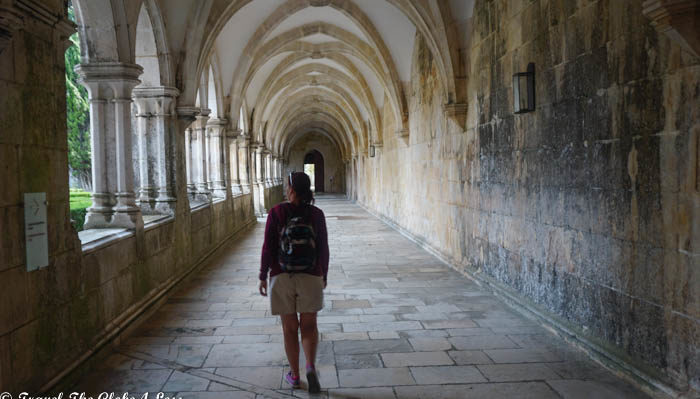
From Batalha, take the short twenty-minute drive to Alcobaça. Walk through the cobbled streets to the mammoth plaza in front of the monastery and admire this gargantuan building. It’s hard to pick a favourite from these three incredible monuments however this monastery definitely houses a tragic tale.
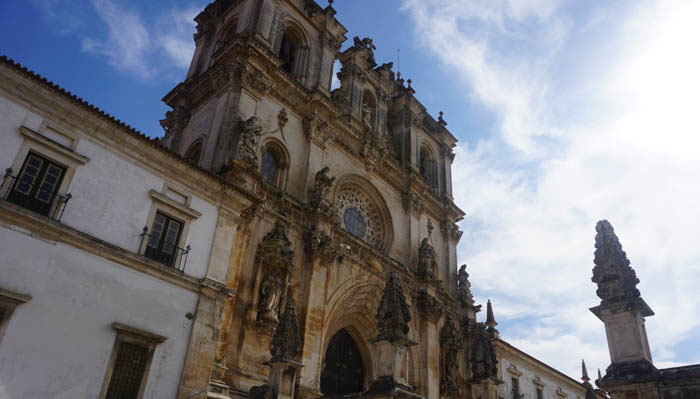
Alcobaça Monastery
From gluttonous monks to tales of revenge, love and devotion, the Alcobaça Monastery provides the backdrop for a heart-wrenching tale of forbidden love. The building dates to 1153 and houses a church more than 100 metres in length and twenty metres high. It lacks ornate decoration but its simplicity is breathtaking.
Equally impressive are the tales of destruction and debauchery linked to the monastery. Storytelling aside, the church is similar to Batalha’s with a long aisle, high columns and sun-drenched courtyards.

Alcobaça love story
In the rear of the monastery, you will find the intricately carved tombs of Dom Pedro and Dona Ines. Dom Pedro was the son of King Dom Afonso IV whilst Dona Ines was one of his wife’s ladies in waiting. They fell madly in love and had several children but even after the death of Pedro’s wife, the King would not sanction their marriage. Not for moral reasons but for fear of overt Spanish influence from the family of Dona. Their love affair eventually came to a gruesome end when Dom Afonso IV sanctioned the murder of Dona Ines in 1355.
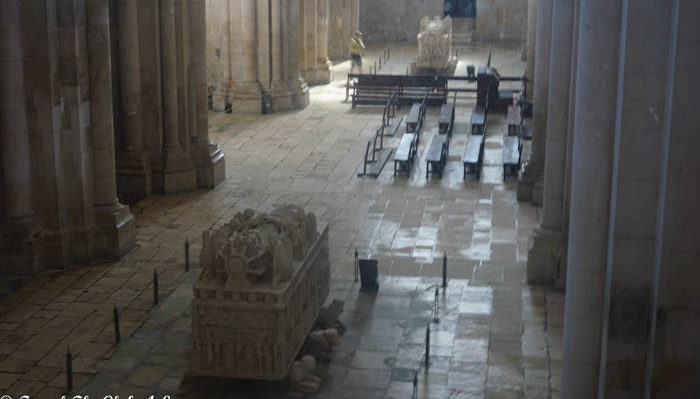
Unbeknown to the King, the enamoured pair had secretly wed only making this tale more tragic. Perhaps her murder drove Dom Pedro to madness. When he acceded to the throne in 1357 he ripped out and ate the hearts of the murderers! He then post-humously crowned the body of Dona Ines. Worse still, he ordered the court to pay homage to her by kissing her decomposing hand!! Perhaps not a tale for the children!
The dual tombs of the love-struck couple can be found at the far end of the aisle facing one another. The large dormitory on the second floor offers a birds-eye view of the two tombs and houses an interactive display. This recounts the detailed story of the two lovers. Coincidentally, during our visit, a film entitled ‘Pedro e Ines’ was released which recounts their story. You can watch the trailer here.
Gluttonous monks
This tragic story is in sharp contrast to the comedic tales of gluttonous monks. So indulgent were they that they failed to fit through the refectory doors. It’s hard to imagine such a feat given the width of the doors but the size of the chimneys in the kitchen might provide a clue! The kitchen was even adapted in the 18th century so that the water channel diverted wild fish directly into the cooking area.
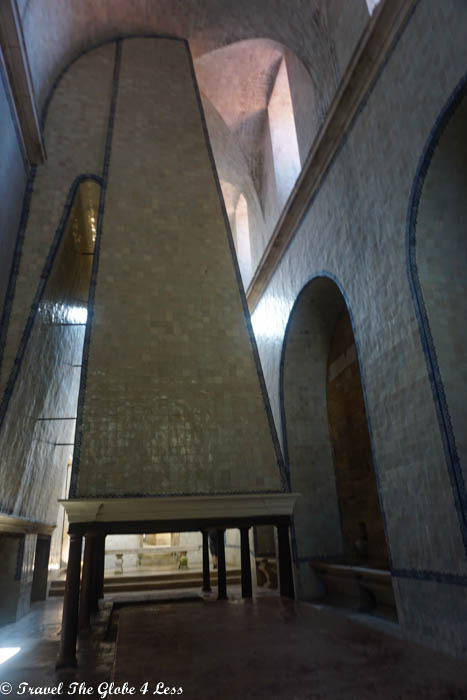
Delightful Portuguese world heritage sites
I had never heard of these monuments prior to visiting Portugal but they are a worthy detour from Lisbon. Hire a car and prepare to be dazzled by tales of horror, intricate carvings and exquisite courtyards. These three UNESCO Portuguese world heritage sites are simply extraordinary.
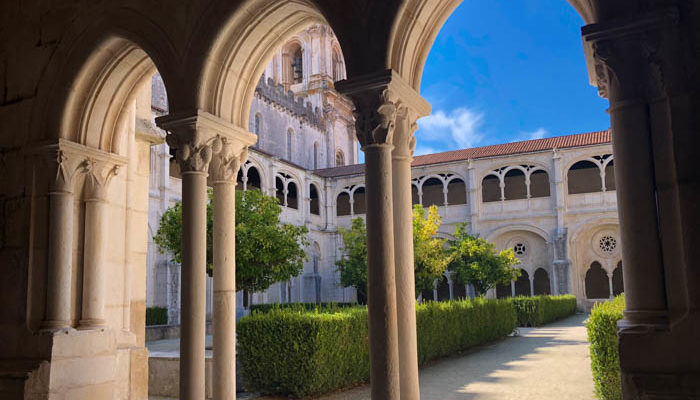
Your thoughts
Has anyone else visited these stunning monuments? How did you find them and what amazed you most about them?
 From Miles to Smiles Stylish travel for professionals seeking luxury at affordable prices
From Miles to Smiles Stylish travel for professionals seeking luxury at affordable prices


